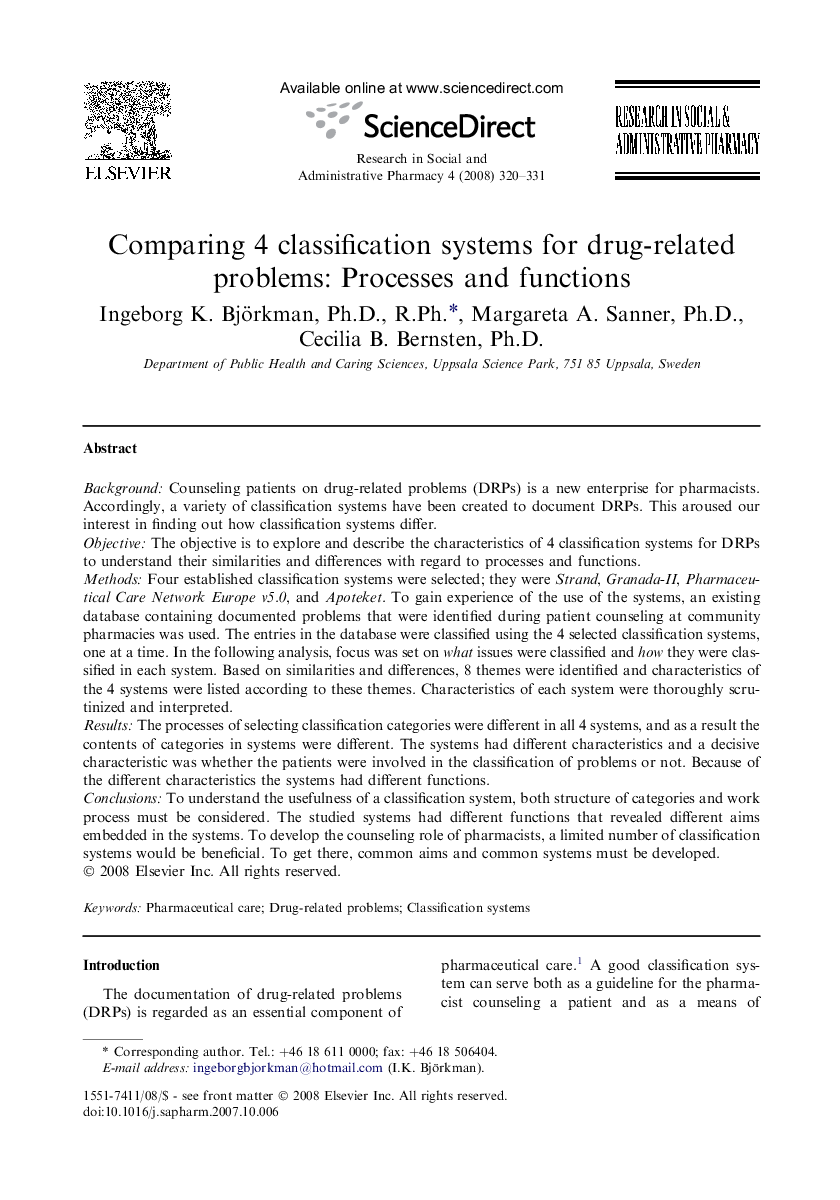| Article ID | Journal | Published Year | Pages | File Type |
|---|---|---|---|---|
| 2508917 | Research in Social and Administrative Pharmacy | 2008 | 12 Pages |
BackgroundCounseling patients on drug-related problems (DRPs) is a new enterprise for pharmacists. Accordingly, a variety of classification systems have been created to document DRPs. This aroused our interest in finding out how classification systems differ.ObjectiveThe objective is to explore and describe the characteristics of 4 classification systems for DRPs to understand their similarities and differences with regard to processes and functions.MethodsFour established classification systems were selected; they were Strand, Granada-II, Pharmaceutical Care Network Europe v5.0, and Apoteket. To gain experience of the use of the systems, an existing database containing documented problems that were identified during patient counseling at community pharmacies was used. The entries in the database were classified using the 4 selected classification systems, one at a time. In the following analysis, focus was set on what issues were classified and how they were classified in each system. Based on similarities and differences, 8 themes were identified and characteristics of the 4 systems were listed according to these themes. Characteristics of each system were thoroughly scrutinized and interpreted.ResultsThe processes of selecting classification categories were different in all 4 systems, and as a result the contents of categories in systems were different. The systems had different characteristics and a decisive characteristic was whether the patients were involved in the classification of problems or not. Because of the different characteristics the systems had different functions.ConclusionsTo understand the usefulness of a classification system, both structure of categories and work process must be considered. The studied systems had different functions that revealed different aims embedded in the systems. To develop the counseling role of pharmacists, a limited number of classification systems would be beneficial. To get there, common aims and common systems must be developed.
